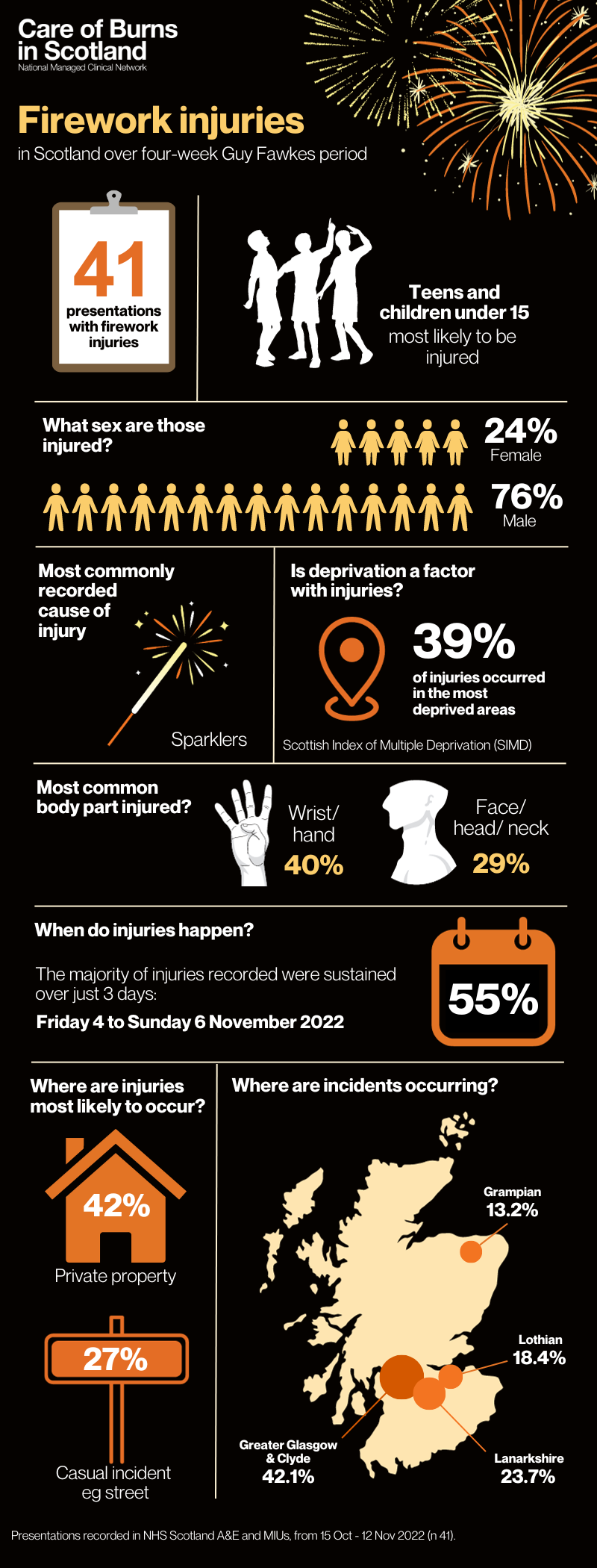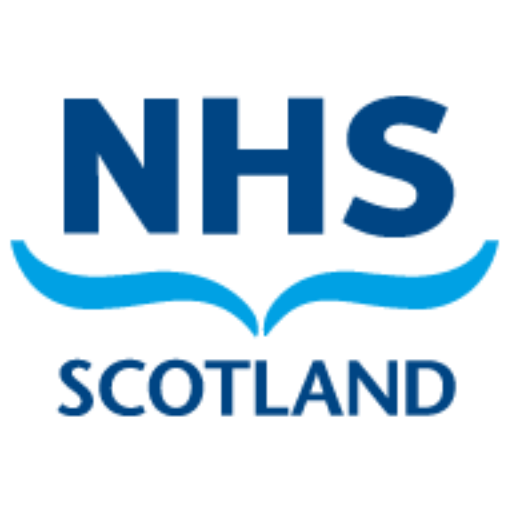Results of the COBIS firework injury survey
The 2022 audit shows young males are most likely to be injured
Care of Burns in Scotland (COBIS) conducted a firework injuries survey last year (2022), compiling data from all Emergency Departments and Minor Injury Units across Scotland. Data was collected over a four-week period surrounding Guy Fawkes night, from Saturday 15 October to Saturday 12 November 2022.
Over the course of four weeks, a total of 41 presentations were recorded with many more thought to occur throughout other celebrations such as Hogmanay, Chinese New Year and Diwali.
Scottish Minor Injury Units (MIU) and Emergency Departments (ED) entered data on firework-related presentations, recording information including: the date of presentation; patient’s sex and their age at time of presentation; the type of injury sustained; the body part injured and any onwards referral.
Of the data collected, injuries were three times more common in males than in females, and most patients were aged 15 years old or younger (56%).
Most incidents occurred at private properties (42%), or in casual incidents (27%) such as the street or general neighbourhood. Reassuringly only one incidence was recorded at a public display, which supports the general advice from the Scottish Fire and Rescue Service that it is often safer to attend organised public firework displays.
There were nine presentations of children aged four and under, and in eight of these cases the injury was caused by sparklers. It is recommended that sparklers are not given to children under the age of five, so these presentations suggest improved awareness is needed.
David McGill, Lead Clinician for the Care of Burns in Scotland (COBIS) network and Consultant Plastic Surgeon at Scotland’s Burn Hub said: “Unfortunately we see a rise in burn injuries around Bonfire Night, in both adults and children. We carry out an annual audit of firework injuries across Scotland, and last year there were 41 injuries recorded over the four-week period around Guy Fawkes night.
“The majority of these occurred at private properties. Injuries reported ranged from minor, such as burns to the fingers, to severe including loss of fingers and complex eye injuries with loss of vision.
“Children are frequently burned with sparklers. There’s a misunderstanding of how hot they can get. They can cause severe burns to fingers and hands, or catch clothing alight. Sparklers should never be given to children under the age of five.
“Great care should be taken around fireworks, especially when children are near. To minimise the risks to you and your family, a publicly arranged event would be by far the safest way to view fireworks.”
Breakdown of data gathered:
When incidents occur
- Over the 29-day data collection period, the majority of injuries recorded were sustained over just 3 days- Friday 4 to Sunday 6 November 2022 (55%).
Teens and under 15s most likely injured
- 23 of the 41 presentations were from those aged 15 years or younger.
- 9 presentations aged between 0 and 4 years
- 7 presentations aged between 5 and 10 years
- 7 presentations aged between 11 and 15 years
Males three times more likely to be injured
- Males are most likely to be injured. In the 2022 audit, 76% of those injured were male (n31), 24% were female (n10)
- 8 of the 10 females injured were between 0 and 4 years.
Sparklers
- Of the 16 patients aged 10 and under, 11 of these injuries were caused by sparklers.
- 8 of the 9 patients aged between 0 and 4 years old, had injuries caused by sparklers.
Body parts injured
- 40% of reported injuries were to the wrist or hand
- 29% involved the face, head and neck
- 17% of injuries were to the eyes
Where incidents happen
- Most firework injuries (42%) occurred at a private property (eg at the person’s home, a friend’s house, a neighbour)
- 27% of injuries were casual incidents (ie in the street)

